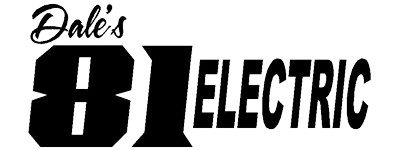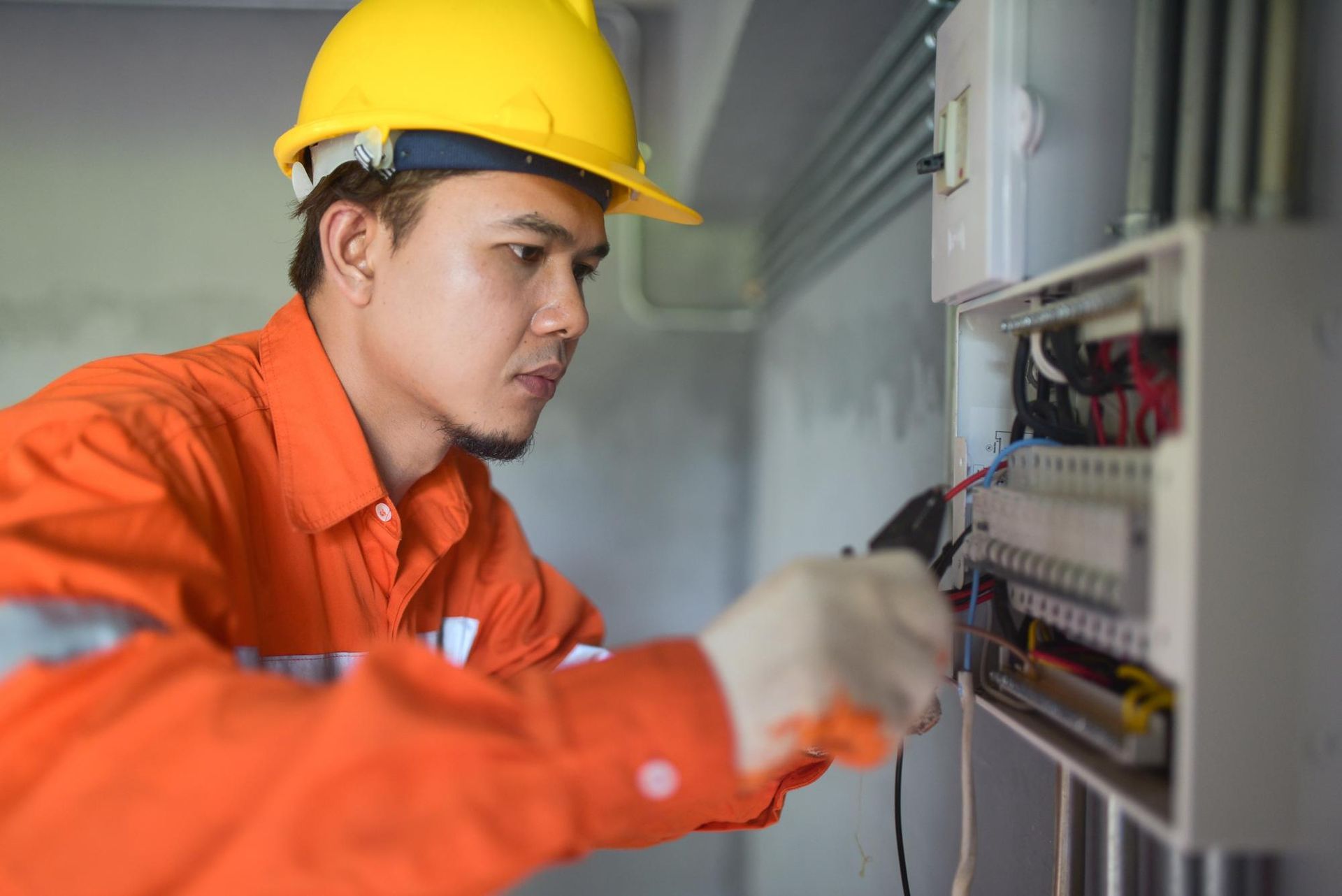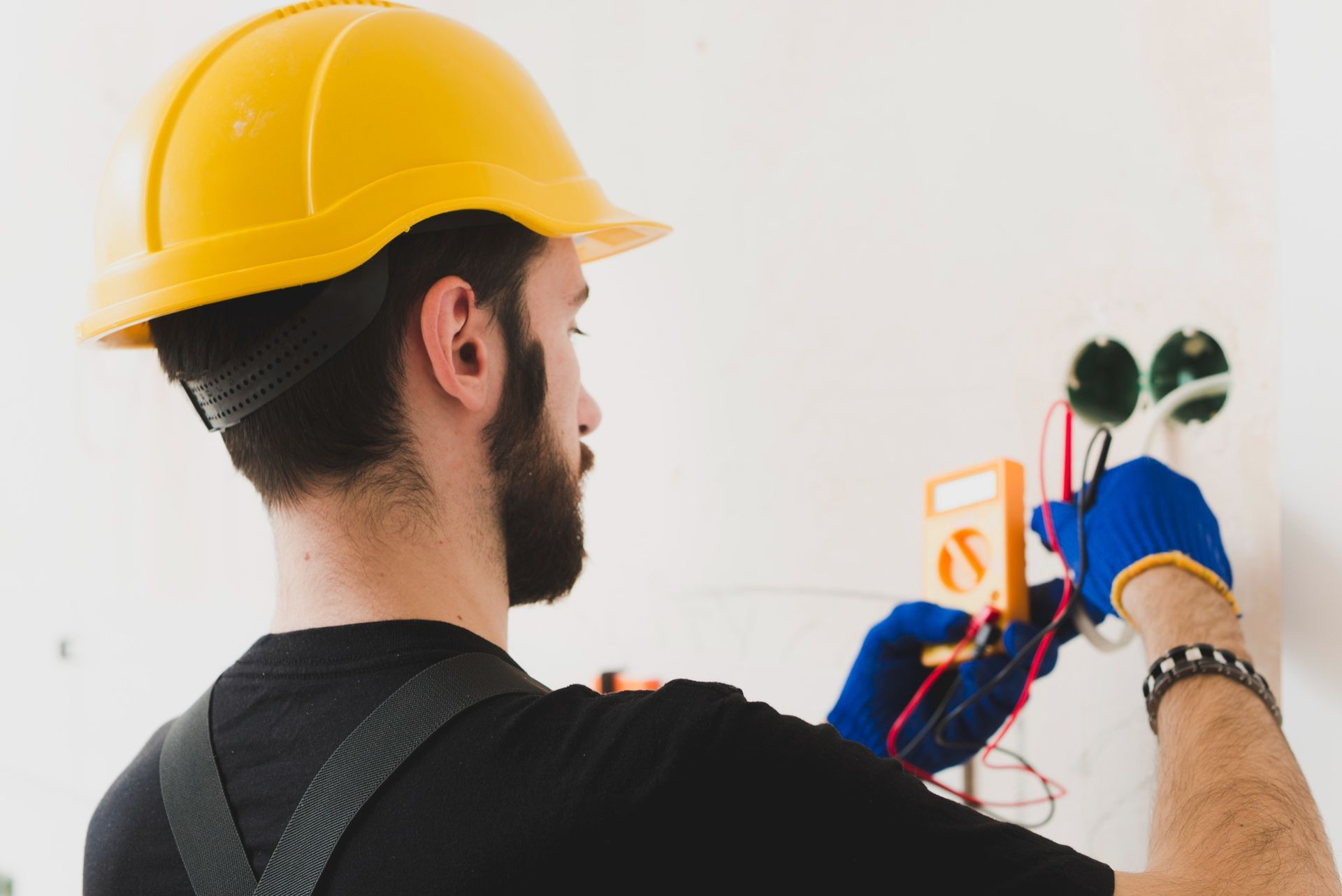Maximizing Efficiency in Electrical Rough-In Inspections
Are you gearing up for an electrical rough-in inspection? If so, you're likely aware of the crucial role this process plays in ensuring the safety and functionality of electrical systems in buildings. The electrical rough-in inspection serves as a vital checkpoint during construction or renovation projects, ensuring that wiring and components are installed correctly before walls are closed up. In this article, we'll explore how maximizing efficiency in electrical rough-in inspections can streamline the process, saving time and resources for both inspectors and property owners.
Understanding Electrical Rough-In Inspections
An electrical rough-in inspection serves as a pivotal stage in the construction or renovation process, ensuring that electrical systems are safely and correctly installed before walls are closed up. This inspection typically occurs after electrical wiring, outlets, switches, and other components have been installed but before insulation and drywall are added. It provides an opportunity for inspectors to access and assess the infrastructure, verifying compliance with local building codes and safety regulations.
During an electrical rough-in inspection, inspectors meticulously examine various aspects of the electrical system. This includes checking the placement and spacing of outlets and switches, ensuring proper wiring techniques are employed, and confirming that electrical components are securely mounted and grounded. Inspectors also assess the capacity of electrical circuits to handle anticipated loads and verify that installations adhere to applicable standards for fire safety and electrical protection.
For property owners, passing the electrical rough-in inspection is a crucial milestone. It signifies that their electrical systems meet regulatory requirements and can proceed to the next phases of construction or renovation. However, failing to meet inspection standards can result in delays, additional costs, and the need for corrective measures before work can continue.
Identifying Efficiency Gaps
Despite the importance of electrical rough-in inspections, inefficiencies in the process can hinder progress and impact project timelines. Common efficiency gaps include disorganization, miscommunication, and unanticipated issues with installations.
Disorganization can arise from incomplete or inaccurate documentation, making it challenging for inspectors to review plans and verify compliance. Additionally, disorganized work areas can impede access to electrical components, prolonging inspection times and increasing the likelihood of oversights.
Miscommunication among stakeholders, including property owners, contractors, and inspectors, can lead to misunderstandings and delays in scheduling and preparation. Lack of clarity regarding inspection requirements or changes to project plans can further exacerbate these challenges.
Unanticipated issues with installations, such as wiring errors or inadequate grounding, can necessitate additional time and resources to address during inspections. Without proper planning and foresight, these issues may not be identified until the inspection process is underway, causing delays and disruptions to project timelines.
To maximize efficiency in electrical rough-in inspections, stakeholders must identify and address these gaps proactively. By implementing strategies to streamline preparation, communication, and problem-solving, project teams can minimize delays and ensure smoother progression through the inspection phase.
Strategies for Maximizing Efficiency
- Pre-inspection Preparation: Thorough preparation before the electrical rough-in inspection is essential for maximizing efficiency. This includes organizing documentation, such as electrical plans and permits, in a clear and accessible manner. Property owners or contractors should ensure that all relevant paperwork is up-to-date and readily available for review by inspectors. Additionally, scheduling the inspection at a time when all necessary installations are completed can help streamline the process and minimize delays.
- Utilization of Technology: Leveraging technology can significantly enhance efficiency during electrical rough-in inspections. Digital documentation systems allow inspectors to access plans and records electronically, reducing the need for cumbersome paper documents. Mobile apps and software specifically designed for construction management can facilitate communication and coordination among stakeholders, enabling real-time updates and notifications regarding inspection status and findings. Furthermore, specialized tools such as thermal imaging cameras can aid in identifying potential issues with electrical installations quickly and accurately.
- Coordination with Contractors: Effective collaboration with contractors and tradespeople is essential for maximizing efficiency in electrical rough-in inspections. Clear communication regarding inspection requirements and timelines can help ensure that installations are completed according to specifications and ready for inspection. Contractors should proactively address any potential issues or deficiencies before the inspection to minimize the risk of failure and subsequent delays. Additionally, establishing regular check-ins and progress updates can help keep the project on track and address any emerging concerns promptly.
Training and Education: Investing in training and education for personnel involved in electrical rough-in inspections can pay dividends in terms of efficiency and effectiveness. Ensuring that inspectors are knowledgeable about the latest codes and regulations, as well as emerging technologies and best practices, enables them to conduct thorough and accurate assessments. Property owners and contractors may also benefit from training programs focused on electrical safety and compliance, empowering them to identify potential issues and address them proactively.
Case Studies or Examples
To illustrate the impact of efficiency on electrical rough-in inspections, let's consider a few real-world examples. In one scenario, a construction project faced repeated delays due to disorganized paperwork and communication breakdowns between contractors and inspectors. By implementing a digital documentation system and improving communication protocols, the project team was able to reduce inspection times by 20% and expedite the overall construction timeline. Similarly, a renovation project encountered challenges with outdated wiring that required extensive troubleshooting during the rough-in inspection. Through proactive planning and collaboration with skilled electricians, the property owner was able to address these issues beforehand, resulting in a successful inspection and timely completion of the project.
Tools and Resources for Efficiency
- Digital Documentation Systems: Software platforms designed for construction management and documentation, such as Building Information Modeling (BIM) software, enable stakeholders to access and share electronic records seamlessly. These systems allow for the centralized storage of plans, permits, and inspection reports, facilitating collaboration and streamlining the review process.
- Mobile Apps for Communication: Mobile applications designed for project management and communication enable stakeholders to stay connected and informed throughout the inspection process. Features such as real-time messaging, task assignment, and document sharing facilitate coordination among contractors, inspectors, and property owners, reducing delays and miscommunication.
- Specialized Inspection Tools: Advanced inspection tools, such as thermal imaging cameras and electrical testers, provide valuable insights into the condition of electrical installations. These tools can detect potential issues, such as overheating or faulty connections, before they escalate into more significant problems, allowing for timely intervention and corrective action.
Training Programs and Courses: Professional development opportunities, such as training programs and courses offered by industry organizations and educational institutions, equip personnel with the knowledge and skills needed to perform efficient and effective electrical rough-in inspections. Topics may include code compliance, safety standards, and emerging technologies in the field.
Future Trends and Innovations
- Automation and Robotics: Advancements in automation and robotics are poised to revolutionize electrical rough-in inspections, enabling tasks such as data collection and analysis to be performed more efficiently and accurately. Automated inspection systems equipped with sensors and artificial intelligence algorithms can detect deviations from standards and identify potential issues with minimal human intervention, reducing the time and resources required for inspections.
- Internet of Things (IoT) Integration: The integration of IoT technology into building systems allows for real-time monitoring and control of electrical installations. Smart sensors and connected devices can provide valuable data on energy usage, equipment performance, and maintenance needs, enabling proactive management of electrical systems and facilitating predictive maintenance practices.
- Augmented Reality (AR) and Virtual Reality (VR): AR and VR technologies offer immersive and interactive experiences that can enhance training and simulation for electrical rough-in inspections. Virtual environments enable inspectors to practice inspection procedures and troubleshoot potential issues in a risk-free setting, improving their confidence and proficiency in the field.
- Data Analytics and Predictive Maintenance: The use of data analytics and predictive maintenance algorithms enables proactive identification of potential issues with electrical systems before they occur. By analyzing historical data and monitoring performance metrics in real time, predictive maintenance systems can anticipate equipment failures and recommend preventive measures, reducing downtime and optimizing system reliability.
Remote Inspection Technologies: Remote inspection technologies, such as drones and remote-controlled cameras, enable inspectors to conduct inspections in challenging or inaccessible locations without the need for physical presence on-site. These tools provide a cost-effective and efficient means of assessing electrical installations in hard-to-reach areas, improving safety and accessibility for inspectors.
Conclusion
Maximizing efficiency in electrical rough-in inspections is essential for ensuring the success of construction and renovation projects. At Dale's 81 Electric, LLC, located in Kingfisher, OK, we understand the importance of efficient inspections in keeping projects on track and within budget. With our expertise and commitment to excellence, we strive to provide the best service possible to our clients. By addressing efficiency gaps, implementing strategic planning, and leveraging tools and resources, we ensure that inspections are conducted promptly and accurately. Our team is dedicated to saving time and resources while ensuring compliance with safety standards, ultimately contributing to safer and more resilient built environments. As technology continues to advance, we remain at the forefront of innovation in inspection practices, embracing new tools and methodologies to deliver high-quality results. For reliable electrical services in Kingfisher, OK, contact Dale's 81 Electric, LLC at 405-375-4207. Let us help you achieve greater success in your projects.
FAQ’s
-
What is an electrical rough-in inspection?
An electrical rough-in inspection is a critical evaluation of preliminary electrical work in a building before the installation of drywall or other finishes. Inspectors assess wiring, outlets, switches, and other components to ensure compliance with local building codes and safety standards.
-
When should an electrical rough-in inspection be scheduled?
The timing of an electrical rough-in inspection varies depending on the specifics of the construction or renovation project and local regulations. Typically, it is scheduled after electrical wiring and components are installed but before walls are closed up.
-
What happens if a property fails an electrical rough-in inspection?
If a property fails an electrical rough-in inspection, the specific issues identified by the inspector must be addressed before a re-inspection can be scheduled. Failure to rectify deficiencies may result in delays in obtaining permits and proceeding with the project.
-
Who is responsible for scheduling and preparing for an electrical rough-in inspection?
Property owners or their designated representatives, such as general contractors or project managers, are typically responsible for scheduling and preparing for electrical rough-in inspections. This includes ensuring that all necessary documentation and installations are in order for the inspection.
-
How can property owners prepare for an electrical rough-in inspection?
Property owners can prepare for an electrical rough-in inspection by organizing documentation, communicating effectively with contractors and inspectors, and addressing any potential issues or concerns with electrical installations beforehand. Additionally, staying informed about local building codes and regulations is essential for compliance.
Need Expert Electrical Services?



